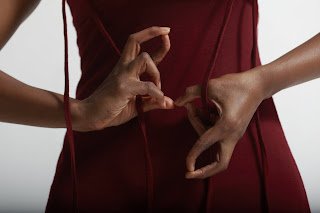 “During my job at the Taj pastry kitchen, I was given a mound of chocolates to wrap. This was my first touch and feel of chocolate. Back then, I did not know that I would be doing this for the rest of my life”, says renowned chocolatier Chenddyna Schae. Chenddyna launched Jus’ Trufs to create a brand for her exclusive chocolates. From a small beginning with a Diwali stall at the Bombay Store to having big corporates as clients, Jus’ Trufs has come a long way since its inception in 2001. Opting out of mass production, Chenddyna carved a niche for herself by customizing chocolates to meet the need of each client. “I wanted Jus’ Trufs to be a corporate gifting company and not just another producer of homemade chocolates”, she says.
“During my job at the Taj pastry kitchen, I was given a mound of chocolates to wrap. This was my first touch and feel of chocolate. Back then, I did not know that I would be doing this for the rest of my life”, says renowned chocolatier Chenddyna Schae. Chenddyna launched Jus’ Trufs to create a brand for her exclusive chocolates. From a small beginning with a Diwali stall at the Bombay Store to having big corporates as clients, Jus’ Trufs has come a long way since its inception in 2001. Opting out of mass production, Chenddyna carved a niche for herself by customizing chocolates to meet the need of each client. “I wanted Jus’ Trufs to be a corporate gifting company and not just another producer of homemade chocolates”, she says. Chenddyna’s chocolaty journey began way back in the eighties when she was a fresh hotel management graduate.
 “Being an independent woman, I found it hard to take orders. I gave up my job and began to work from my home kitchen”, she says. Making burgers, pizzas and cakes while in Manipal and making chocolates after she moved to Mumbai, Chenddyna had a modest beginning as a self-made entrepreneur. She then took a break from commercial chocolate making to devote her time to her children and family. After relocating to Bangalore, she launched Jus’ Trufs and was back to business after a 10-year hiatus.
“Being an independent woman, I found it hard to take orders. I gave up my job and began to work from my home kitchen”, she says. Making burgers, pizzas and cakes while in Manipal and making chocolates after she moved to Mumbai, Chenddyna had a modest beginning as a self-made entrepreneur. She then took a break from commercial chocolate making to devote her time to her children and family. After relocating to Bangalore, she launched Jus’ Trufs and was back to business after a 10-year hiatus. In the nascent stages of her venture, Chenddyna’s kitchen was her workplace and her domestic help assisted her in chocolate making. She now has a dedicated team working to make chocolates and a factory that can produce up to 100 kilograms of chocolates per day. There were just four varieties initially, but now Chenddyna finds it hard to put a number on the flavors on offer.
Jus’ Trufs is known for its soft-centered truffles but it offers a lot more than just truffles.Local flavours like cinnamon, elaichi, chai masala and coconut are a huge hit with foreigners who savor the taste of India in the chocolates. Innovative creations like edible chocolate photo frames, chocolate roses and chocolate logs add variety to the collection.
 Photographs, logos, invites and messages for any occasion can be printed on these custom made chocolates. “There is immense attention to detail. Maintaining personal contact with clients is sometimes challenging but essential if we need to understand their specific requirements”, says Chenddyna talking about the care taken to process each order.
Photographs, logos, invites and messages for any occasion can be printed on these custom made chocolates. “There is immense attention to detail. Maintaining personal contact with clients is sometimes challenging but essential if we need to understand their specific requirements”, says Chenddyna talking about the care taken to process each order.The ingredients that go into making various types of chocolates are sourced from the far corners of the world. “Raw chocolate is imported from Belgium and coco beans are sourced from Ghana. We have other raw materials coming from Singapore, Madagascar and Sao Thome. Blending these ingredients is our secret recipe”, says Chenddyna. The colours and flavours of the season influence the presentation of the chocolates. Different moulds and wrappers are brought out for special occasions like Valentines Day, Christmas, Diwali, Rakhi, Father’s Day and Easter. To keep up with the spirit of the ongoing football frenzy Jus’ Trufs has introduced chocolates that resemble footballs.
Jus’ Trufs provides end-to-end solutions in designing chocolates and hampers that are delivered to different parts of India and abroad. The packaging is customized for each delivery depending on the distance and weather conditions. Catering to an exclusive clientele, the orders range from extravagant wedding spreads to huge corporate orders.
 While some chocolates are bought for a reason, the others are for the season and the rest are for sheer indulgence in rich chocolate that makes people high and happy.
While some chocolates are bought for a reason, the others are for the season and the rest are for sheer indulgence in rich chocolate that makes people high and happy. Retail Outlets: Jus’ Trufs have their counters at Hypercity in Whitefield, Columbia Asia Hospital, Crossword on Residency Road, Infinitea on Cunnigham Road, Chocoworld in Jayanagar and at the International terminal of the BIAL.
For more details log on to http://www.justrufs.com/.

This article was published in The Hindu, Bangalore edition on the 30th of June 2010. Below is the link to the online version of the article.
http://www.thehindu.com/life-and-style/Food/article492097.ece




















